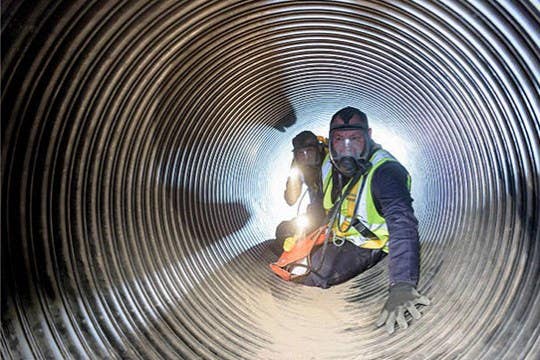
5 Steps to Confined Space Training
By John Heniff, Safety Writer, Magid
More than 1,000 workers died from injuries involving a confined space from 2011-2018. In these dangerous situations, it’s easy for workers to try to think on their feet and forget their training when things go wrong. But by focusing on real-life examples during training sessions, you can help your workers understand the importance of ignoring their impulses if they encounter dangerous situations in the field and following their training instead.
Here are five ways you can prepare workers for operating in confined spaces.


1
1. Ensure Everyone Knows Their Role for Confined Space Safety
Teaching and reviewing the four roles for confined space work with your team can help them stay focused and remind them not to try to perform tasks outside of their responsibilities. Keep those lessons top of mind with safety reminder posters that outline the differences between common confined space roles - Entrants, Supervisors, Attendants, and Rescue Personnel.




2
2. Know the Silent Killer in Confined Spaces – Atmospheric Hazards
An often-cited study found that 79 percent of deaths in confined spaces were due to atmospheric hazards, many of which are dangerous and even flammable, yet colorless or undetectable by smell at high concentrations. Many workers who succumbed to these harmful substances were not wearing a proper breathing apparatus when they entered the space.
Even if workers think the job will be quick or the space has been properly ventilated, share this statistic with your workers to emphasize checks on atmospheric hazards. This can help them stay aware during different points of operations like ensuring the attendant is monitoring internal conditions, proper ventilation fans are being used, and the proper PPE is being worn at all times.


3
3. Discuss Air Quality Testing Equipment
If your workers are using the wrong testing equipment or their equipment is being used incorrectly, they won’t know for sure if the space is free from atmospheric hazards. Their equipment might say the space is free of hazards, but if it isn’t properly calibrated, that might not be the case. Consider bringing in an experienced or retiring attendant to talk to your workers about using equipment correctly. Utilize their experience to inform first-time confined space workers about the dangers of improper gas monitoring and other hazards.


4
4. Create & Use Written Confined Space Training Procedures
A NIOSH investigation of confined space incidents found that only 31 percent of companies that experienced a confined space incident had written entry procedures for operations. Even worse, of those 31 percent who did have written procedures, NONE of them actually used them! During your pre-planning phase, go over the Hazard Assessment for the confined space to drive home that workers need to read and follow permit protocols to be aware of any hazards within the space. These can include:
- Live wires or explosive vapors that can cause fires or explosions
- Unstable ground that can lead to trips or falls
- Sources of energy that need to be locked out, tagged out, and isolated
- Loose materials that can strike or engulf a worker
- Extreme heat or cold


5
5. Explain How Untrained Rescuers Can Make a Bad Situation Worse
Approximately 60 percent of confined space fatalities are would be rescuers trying to help a coworker. If a worker suspects their teammate is in trouble, they may impulsively jump into action to try to help. But in doing this, they are likely putting themselves in danger and forcing rescue personnel to look for more people. Emphasize in your training that no matter the circumstances, workers outside the space should not interfere with rescue operations or act as would-be rescuers. It’s noble to want to help a teammate, but its smarter and safer for everyone to step aside and let trained personnel perform rescue operations.


A common theme through all these examples is training, training, training! Inadequate training is a common factor in many fatal incidents, but it can be especially dangerous when working in confined spaces. Add to your training library and techniques by downloading our FREE Confined Space Safety Training PPT for your workers!



